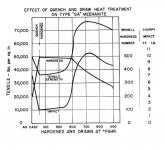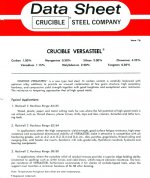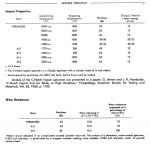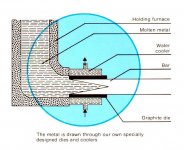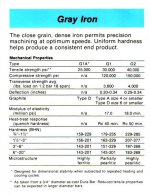You need to go buy a book about tool steels. Cast iron cannot be hardened. It can be case hardened to a thin depth,but is still not a good substitute for tool steel.
Get books and study up. You seem to be at ground zero in understanding steels. It is a problem,however,that I have never seen a book about tool steels that also discussed cast iron.
To help you,here are some facts about cast iron and its uses:
1.Cast iron is brittle and totally unsuitable for cutting tools. It is fairly soft; You can whack it with a hammer and make a decent size dent in it.
2.Cast iron is used to make machinery frames out of. It is used because it is less expensive than trying to make a frame out of steel. It dampens vibrations pretty effectively.
3. Cast iron is rather "self lubricating" because of its high graphite content. This does not mean you should run your machine DRY. But,cast iron does resist wearing out better than most steels. An example is this- Oliver,a maker of woodworking machinery,and a well respected maker indeed,got the brilliant idea of trying to make the tables of its jointers out of steel. Possibly they thought fabricating the tables of steel might be cheaper than casting them. Or,maybe they thought steel would out wear cast iron. I have no idea. But,they ought to have sent their engineer(s) back to SCHOOL. The steel tables very soon got grooves worn into them when planing plywood on its edges. I don't know what they did about that,but they should have replaced those jointers,or fitted new CASR IRON tables to them. No doubt they had a bunch of PISSED OFF customers on their hands!!
4. Malleable iron (also called ductile iron) is cast iron that has been baked at about a red heat in a furnace for hours,to reduce the very high carbon content,making the formerly cast iron bendable,ot less likely to break if dropped on a hard floor. Premium wood planes these days are about all made of malleable iron. Their blades,however,are made of TOOL STEEL.
5.Cast iron
,though it has been used more than any other metal for making the frames of all kinds of machine tools,is a difficult metal to machine. The high carbon content will very soon dull HSS cutting tools. Very slow feeds and speeds must be used when machining it. No cutting oils are used when machining it. It is a filthy metal to cut,leaving everything near the cutting action filthy black. (I may have made errors with this,please feel free to correct me). I never machine much cast iron myself.
6. Cast iron used on high wearing surfaces,such as lathe beds,may be INDUCTION HARDENED,either by electrical means,or flame. Then,the hardened surfaces will(or can) be so hard you cannot file them. Most modern machinery has induction hardened beds.Even Chinese lathes.Most are "file hard",but my Romanian made "Pro Master" lathe from MSC was able to be filed a little,being softer at 55 RC. Harder than a good steel spring. I wish it had been made harder,though.But that was just a SMALL problem compared with the HOST of trouble with that lathe!!!!
This is about all I care to write about right now,and I'm sure some of my listings have errors. So,feel free to make polite corrections,or be total jack asses,and hoot my errors to the moon,like some of you guys usually do to ANYONE who makes an error!!!










